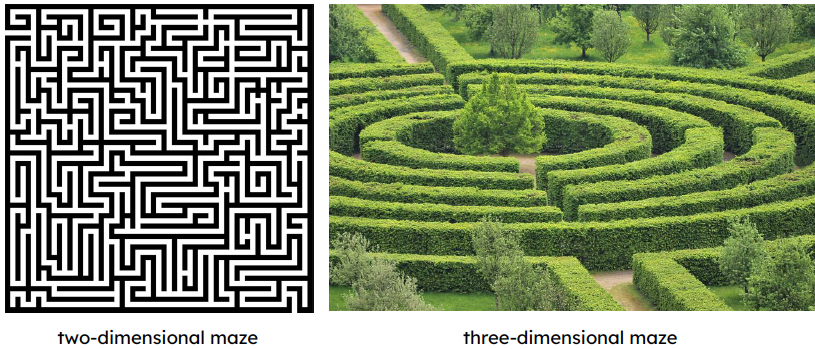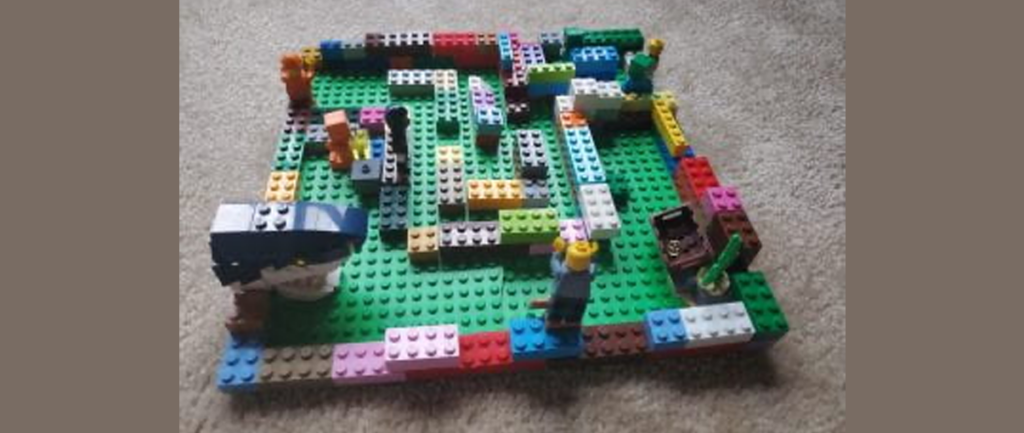Materials
Materials can be anything you fi nd around your house. Some suggestions are:
- Straws
- Toothpicks
- Cardboard
- Popsicle Sticks
- Paper Towel Rolls
- Paper Plates
- A Marble or Small Ball
- Tape
challenge
A maze is a network or series of paths that are designed as a puzzle through which one has to find its way. Mazes come in many forms but are always filled with dead ends. You may have experience with solving a two dimensional maze, such as an illustration on paper that is solved with a pencil, or a three dimensional maze, such as a mirror, corn, or hedge maze that is solved by finding your way through a physical puzzle in person. Can you construct a three dimensional maze with recycled materials found at home? Use the Engineering Design Process to help you complete this challenge.
Big Idea
Mazes have been around for Centuries! The word “maze” dates back to the 13th century, meaning delusion or delirium. The world’s first mazes were known as Labyrinths. Labyrinths are a bit different, and were designed as one winding path, instead of having multiple dead ends like a maze. The fi rst Labyrinths date back to ancient Egypt.

Instructions
- Draw a design or color 2 index cards (one for wings and one for the body of the plane).
- Carefully cut or tear out the airplane wings.
- Loosely roll the body index card around the straw.
- Tape the long edge so it won’t unroll.
- Carefully make a fold at the end of the airplane body (do not bend the straw please).
- Tape or glue your airplane wings to the body of the plane and draw in windows with a marker.
- Take a deep breath and launch your plane by blowing air on the open portion of the straw.
Examples of mazes that could be built at home

The Engineering Design Cycle


